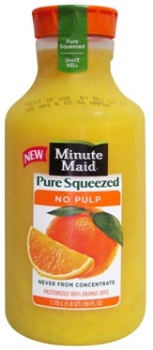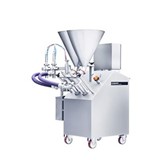The top trends relate purity, authenticity and sustainability, as consumers continue to look for products with added value, despite the ongoing economic uncertainty. Innova Market Insights will present the top trends at Food Ingredients Europe (Paris, Stand: 4D13).
1. "Pure" is the New Natural: Natural products are becoming the rule rather than the exception in most western markets, despite ongoing issues with a clear definition of what "natural" encompasses. One way around this has been marketing the "purity" of a product, with Innova Market Insights reporting a doubling in the number of products using the word "pure" between 2008 and 2009, with a further third added in 2010 and considerably more in 2011.
2. Green is a Given: Corporate social responsibility and sustainability strategies have taken on an increasingly important role. The focus is on reducing carbon emissions or packaging, or creating higher welfare or fairly traded lines. The "ingredientization" of commodities is also moving forward, with previously untapped waste materials used for their potential functional and health benefits.
3. Location, Location, Location: Interest in where their foods are coming from has never been higher among consumers. This is being driven by an interest in supporting local suppliers, a desire for ethnic-style lines, concerns over the quality and safety of imported products, or the demand for authenticity in terms of products from a particular country or region.
4. Premium Stands Out: Despite austerity measures topping the agenda yet again from mid-2011, a premium positioning provides many benefits. Consumers still have to eat and are likely to look increasingly to the extremes of discount or super-premium products, with center-ground brands squeezed. A premium treat can be justified as an affordable indulgence during difficult economic times, particularly if it can also encompass a better-for-you element.
5. Seniors Draw Attention: Companies are starting to address the needs of an aging population, both in terms of packaging functionality and of general and specific health concerns. New EU regulations on labeling should also help seniors by improving the clarity and visibility of nutritional information. Various recent moves have been made in US front-of-pack labeling.
The other five trends identified by Innova Market Insights are:
6. Forty is the New Twenty: There is an increasing focus on "successful aging" or "extending the middle years" with an active, productive and rewarding life for as long as possible. There is greater emphasis on nutrition for the later years in terms of nutrient intake. But there is also an interest in ingredients with the potential to aid longer active lifestyles. The key will be "eating right" and "balanced nutrition."
7. Grounded in Science: With the 2012 publication of the European Commission’s "Union list" for generic health claims, manufacturers using ingredients given EFSA approval will be able to continue to use "scientifically proven’ claims. Some ingredients still need a breakthrough in terms of success with EFSA or existing claims may have to be removed from packaging as early as Autumn 2012. Meanwhile manufacturers using ingredients given EFSA approval will be able to continue to use "scientifically proven" claims.
8. Regulators Force a Rethink: The role that governments have in controlling dietary lifestyles continues to court controversy, particularly following Denmark’s pioneering and controversial introduction of the world’s first "fat" tax, applying a surcharge to high-saturated fat foods, aimed at helping combat obesity and heart disease. The new US dietary guidelines are also encouraging manufacturers to reduce saturated fats, sugar and sodium in their formulations.
9. Unmeasurable Niches: With modern communication methods, particularly through social media, small players in the food industry can compete more successfully with their larger, multinational rivals. The multinationals now also need to take a more multi-local approach to uphold a locally-sourced image and position in the community. More products are also being targeted at small groups or individuals with products that can be tailored for individual tastes and preferences.
10. Boom for Protein: New and existing sources of protein are being viewed on sustainability and health grounds, with developments in soy, wheat, lupin and other protein sources such as chick peas. There is also research into natural proteins from vegetable and animal origins that can replace fats, as well as into artificial meat replicating animal tissues.














